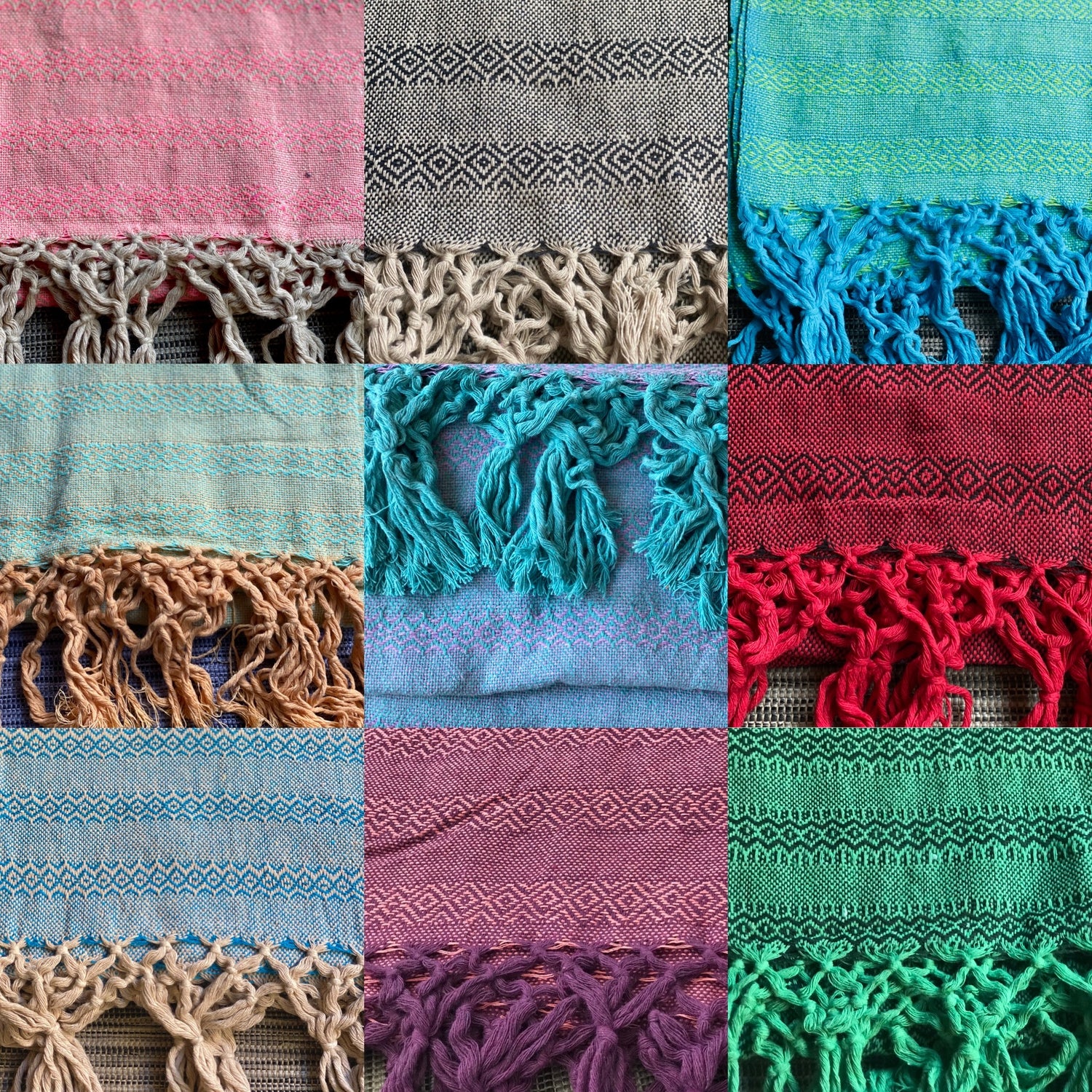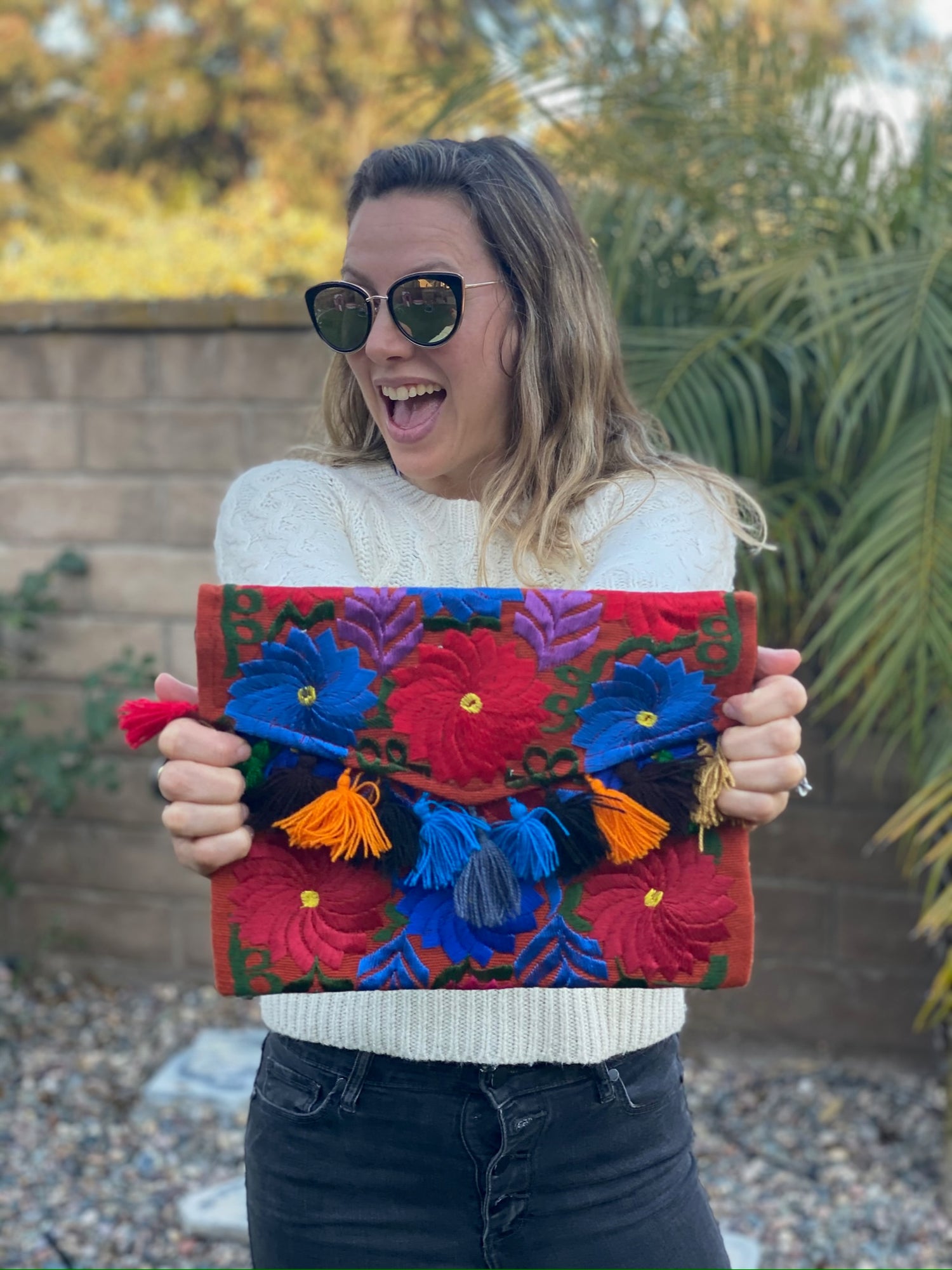The rebozo is more than just a shawl; it is a symbol of Mexico's rich culture and heritage. Traditionally woven by indigenous women, this fabric carries deep historical significance and embodies stories passed down through generations.
Today, the revival of rebozo weaving not only preserves these cherished traditions, but also introduces innovative designs that attract a modern audience.

In recent years, artisans have blended traditional techniques with contemporary styles, making the rebozo relevant in today's fashion scene. This evolution highlights the importance of keeping cultural practices alive while adapting to shifting trends.
By embracing this revival, you can connect with a piece of history that has shaped identity and artistry within Mexican communities.
As you explore this fascinating journey, you will discover how the past and present intersect through the art of rebozo weaving and its impact on cultural significance today.
Key Takeaways
- The rebozo reflects the rich heritage of Mexican culture.
- Traditional rebozo weaving is evolving to meet modern tastes.
- Engaging with rebozo artistry fosters a connection to its historical roots.
The Historical and Cultural Roots of the Rebozo

The rebozo is a traditional shawl rich in history and cultural significance. Its origins trace back to Mesoamerica and it has evolved through various influences while maintaining its connection to Mexican identity.
Origins and Evolution
The rebozo originated in Mesoamerica, where indigenous women first crafted it using cotton or agave fibers. This textile served practical purposes, such as providing warmth and carrying items.
Over time, it gained popularity among different social classes in Mexico. Spanish colonization introduced new weaving techniques and designs, including influences from Spanish mantillas. The merging of these styles helped shape the rebozo into a versatile item of clothing.
In the colonial period, the rebozo became a significant cultural accessory, symbolizing tradition and identity. Its features can be identified in various indigenous textiles, linking the past with contemporary culture.
The Rebozo in Art and Popular Culture
The rebozo has appeared prominently in art and popular culture, representing Mexican heritage. Artists like Frida Kahlo often included it in their works to showcase cultural identity and tradition. This shawl is featured in many museums, celebrating its history and craftsmanship.
The rebozo appears in literature, music, and folklore, becoming a beloved symbol of Mexican independence. During celebrations, it is worn with pride, highlighting the connection to one's roots. Popular events, such as Mexican Independence Day, often showcase the rebozo, linking it to national pride and cultural expression.
Symbolism and Meaning Embodied in Design
The design of the rebozo carries deep symbolism and significance. It represents elements of indigenous culture and artistic expression.
Patterns and colors may signify various meanings, reflecting identity and personal stories. The rebozo is not just a garment; it embodies cultural heritage and preserves shared history. Each piece tells a story, connecting the wearer to their Mexican roots.
The use of traditional weaving techniques ensures that the artistry and symbolism remain intact. As you wear a rebozo, you carry a piece of cultural identity that has survived generations, embodying the spirit of community and resilience in Mexican culture.
Preserving and Innovating Rebozo Weaving

Rebozo weaving is experiencing a revival through education, workshops, and modern fashion interpretations. These efforts not only preserve traditional techniques but also showcase the artistry and versatility of this unique garment in contemporary society.
Contemporary Rebozo Fashion and Design
Mexican designers are redefining the rebozo by integrating it into modern fashion. You’ll find these shawls featured in runway collections, blending traditional craftsmanship with contemporary style. Designers focus on the beauty of the rebozo while showcasing its versatility.
High-quality fabrics often use the ikat technique, which involves tying and dyeing threads before weaving. This method creates stunning patterns that appeal to today’s fashion market. Many brands emphasize sustainable practices, using natural dyes and handwoven materials.
This not only honors tradition but also attracts eco-conscious consumers.
Rebozo Weaving Techniques and Artistry
The artistry behind rebozo weaving involves a rich history of techniques passed down through generations. Weavers skillfully employ backstrap looms to create intricate patterns.
This traditional method requires a deep knowledge of design and craftsmanship.
Workshops have become essential in keeping these techniques alive. You can find programs that teach both novices and experienced artisans about traditional weaving. These sessions often cover the use of natural dyes, fostering a connection between the past and present.
Local exhibitions also highlight these beautiful works, drawing attention to the dedication of artisans. By promoting these skills, communities celebrate their cultural heritage while inspiring new generations.
Community and Economic Impact
The revival of rebozo weaving significantly impacts local communities. By promoting traditional crafts, artisans gain opportunities for income and empowerment.
You’ll often see weavers collaborating on projects that enhance economic stability.
These initiatives foster community bonds and encourage cultural pride. As you support local artisans, you contribute to a sustainable future for these crafts.
The labor that goes into each handwoven piece reflects a commitment to preserving cultural identity while adapting to modern needs.
Through workshops and community events, awareness grows, drawing attention to the beauty and significance of rebozo weaving. This not only enriches the local economy but also ensures that traditional artistry remains vibrant and relevant.
Frequently Asked Questions

Many people are interested in how traditional rebozo weaving survives today. This section addresses the preservation and significance of the rebozo, its cultural roots, and the techniques involved in its craft. You'll also learn about the balance modern weavers strike between creativity and tradition.
How has traditional rebozo weaving been preserved and promoted in contemporary society?
Communities and artisans have worked hard to keep rebozo weaving alive. Workshops and festivals showcase this art, drawing attention to its significance.
Social media platforms have also played a role by allowing weavers to share their creations and stories with a wider audience.
In what ways does rebozo weaving reflect the cultural heritage of its place of origin?
Each rebozo carries unique symbols and patterns linked to specific regions in Mexico. These designs tell stories from local histories and traditions, connecting the wearer to their roots.
The materials and colors used also reflect the natural environment and cultural practices of the area.
What are the unique techniques and skills involved in the craft of rebozo weaving?
Rebozo weaving involves intricate techniques passed down through generations. Artisans typically use a backstrap loom, requiring skill to create patterns.
Different types of stitches and weaves add texture and depth, making each piece unique.
What role does the rebozo play in cultural identity and traditions?
The rebozo is more than just an accessory; it symbolizes cultural identity for many women. It is often worn during traditional ceremonies and celebrations, linking personal and communal heritage.
The way it is used can signify social status, marital status, and regional affiliation.
How are modern weavers balancing innovation with the preservation of traditional rebozo methods?
Modern weavers are finding ways to incorporate contemporary designs while respecting traditional methods. They experiment with colors and materials to appeal to new generations.
This balance allows them to keep the craft relevant while honoring its historical significance.
What has been the impact of the modern textile industry on traditional rebozo production?
The modern textile industry poses challenges to traditional rebozo weaving. Mass-produced textiles can overshadow handmade pieces, affecting demand. However, there is a growing interest in artisanal products, which helps sustain the art of rebozo weaving in today's market.




